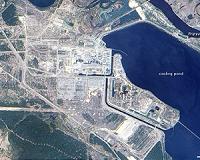 |
Washington DC (SPX) Mar 11, 2011 A new report from the National Research Council recommends a suite of planetary science flagship missions for the decade 2013-2022 that could provide a steady stream of important new discoveries about the Solar System. However, if NASA's budget over that decade cannot support all of these missions, the agency should preserve smaller scale missions in its New Frontiers and Discovery programs first and delay some or all of the recommended large-scale missions, the report says. Research priorities were selected through a rigorous review that included input from five expert panels. The committee also sought extensive input from the planetary sciences community through town hall meetings and white papers. Recommendations are informed by NASA's own FY 2011 projected budget scenarios for 2013-2022. In addition, the committee hired a contractor to provide independent cost and technical analyses of select mission proposals. "Our recommendations are science-driven, and they offer a balanced mix of missions - large, medium, and small - that have the potential to greatly expand our knowledge of the Solar System," said Steven W. Squyres, professor of astronomy at the Center for Radiophysics and Space Research, Cornell University, Ithaca, N.Y., and chair of the committee that wrote the report. "However, in these tough economic times, some difficult choices may have to be made. With that in mind, our priority missions were carefully selected based on their potential to yield the most scientific benefit per dollar spent." The Mars Astrobiology Explorer Cacher (MAX-C), a mission to Mars that could help determine whether the planet ever supported life and could also help answer questions about its geologic and climatic history, should be NASA's highest priority large mission, the report says. This mission will be the first step in a multipart effort to eventually return samples from the planet. The report stresses, however, that the mission should be conducted only if the cost to NASA is approximately $2.5 billion - $1 billion less than the independent estimates provided to the committee. NASA and the European Space Agency, which would run the mission jointly, should work together to reduce the scope of the mission and ensure that both agencies still benefit. A mission to Jupiter's icy moon Europa and its subsurface ocean - one of the most promising environments in the Solar System for supporting life - should be the second priority for NASA's large-scale planetary science missions. However, NASA should fly the Jupiter Europa Orbiter (JEO) only if NASA's budget for planetary science is increased, the report says, and JEO's mission scope is made more affordable. The independent estimate put the price tag at $4.7 billion. The committee concluded that unless costs could be brought down, conducting JEO would preclude too many other important missions. The third priority for large missions would be the Uranus Orbiter and Probe mission to investigate that planet's interior structure, atmosphere, and composition. The report says that this mission should be initiated between 2013 and 2022, but it should be subjected to rigorous, independent cost verification throughout its development and reduced or cancelled if costs grow significantly above its assessed $2.7 billion price tag. For medium-size missions, the report recommends that NASA select two new missions to be included in its New Frontiers program, which explores the Solar System with frequent, mid-size spacecraft missions. Since its inception in 2003, the program has initiated two missions and is in the process of selecting a third. The committee recommends that NASA also select a fourth and fifth mission in the 2013-2023 time frame and identifies several candidates from which NASA could choose, but does not prioritize them. Instead, selection should be based on competitive peer review. Although the report does not make specific recommendations for small missions, it notes that NASA's Discovery Program of low-cost, highly focused planetary science investigations has made important contributions to science and should be continued at its current level of funding with adjustments for inflation. NASA should ensure a regular, balanced schedule of such missions. The committee also endorses the Mars Trace Gas Orbiter, a small mission outside of the Discovery program due to launch in 2016, as long as current plans for dividing responsibilities and costs between NASA and the European Space Agency remain. The National Science Foundation, which supports nearly all areas of planetary science except space missions, should expand its funding for existing laboratories and establish new facilities as needed, the report says. It also urges NSF to complete the Large Synoptic Survey Telescope, which could provide important contributions to planetary science. The study was sponsored by NASA and NSF. The National Academy of Sciences, National Academy of Engineering, Institute of Medicine, and National Research Council make up the National Academies.
Share This Article With Planet Earth
Related Links National Research Council Space Tourism, Space Transport and Space Exploration News
 Is Radiation A Concern For Space Crops
Is Radiation A Concern For Space CropsMoffett Field CA (SPX) Mar 04, 2011 Radioactivity lingering in the soil near the site of the Chernobyl nuclear power plant accident has not prevented life from creeping back at the Ukrainian site. Now researchers have discovered that oil-rich flax plants grown in the highly radioactive soil can apparently adapt and thrive with few problems. The first generation survived with changes in barely 5 percent of the plant proteins, ... read more |
|
| The content herein, unless otherwise known to be public domain, are Copyright 1995-2010 - SpaceDaily. AFP and UPI Wire Stories are copyright Agence France-Presse and United Press International. ESA Portal Reports are copyright European Space Agency. All NASA sourced material is public domain. Additional copyrights may apply in whole or part to other bona fide parties. Advertising does not imply endorsement,agreement or approval of any opinions, statements or information provided by SpaceDaily on any Web page published or hosted by SpaceDaily. Privacy Statement |